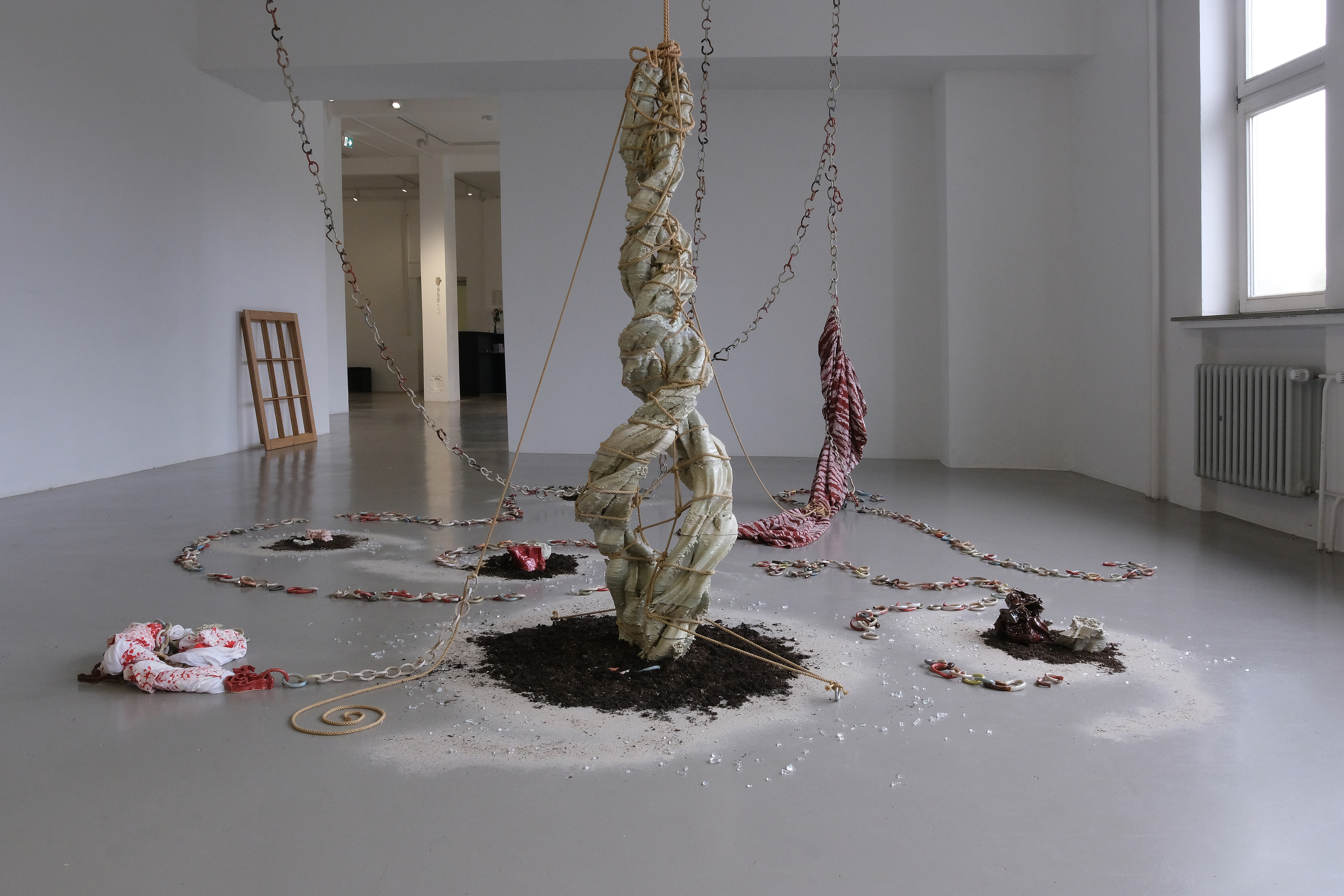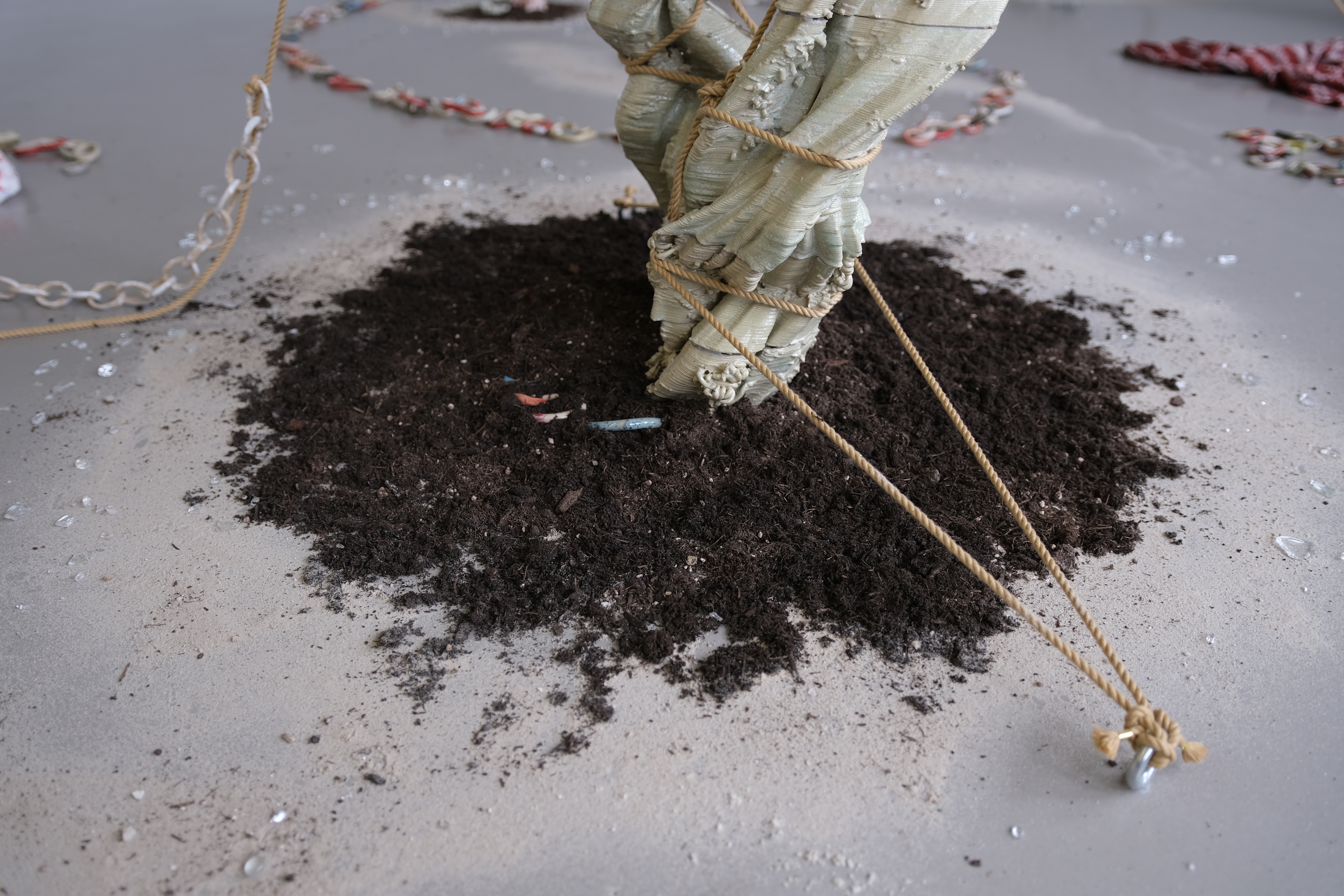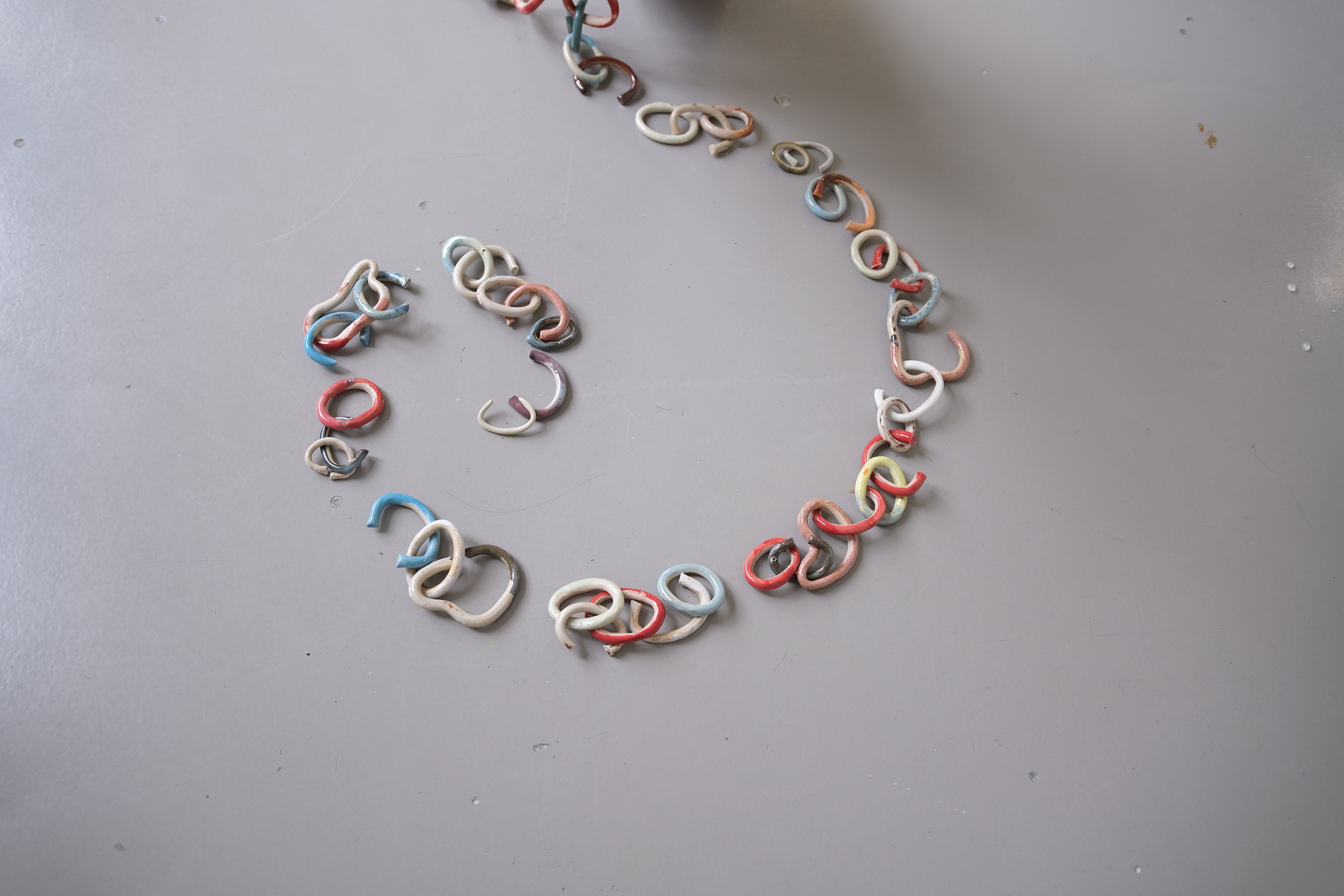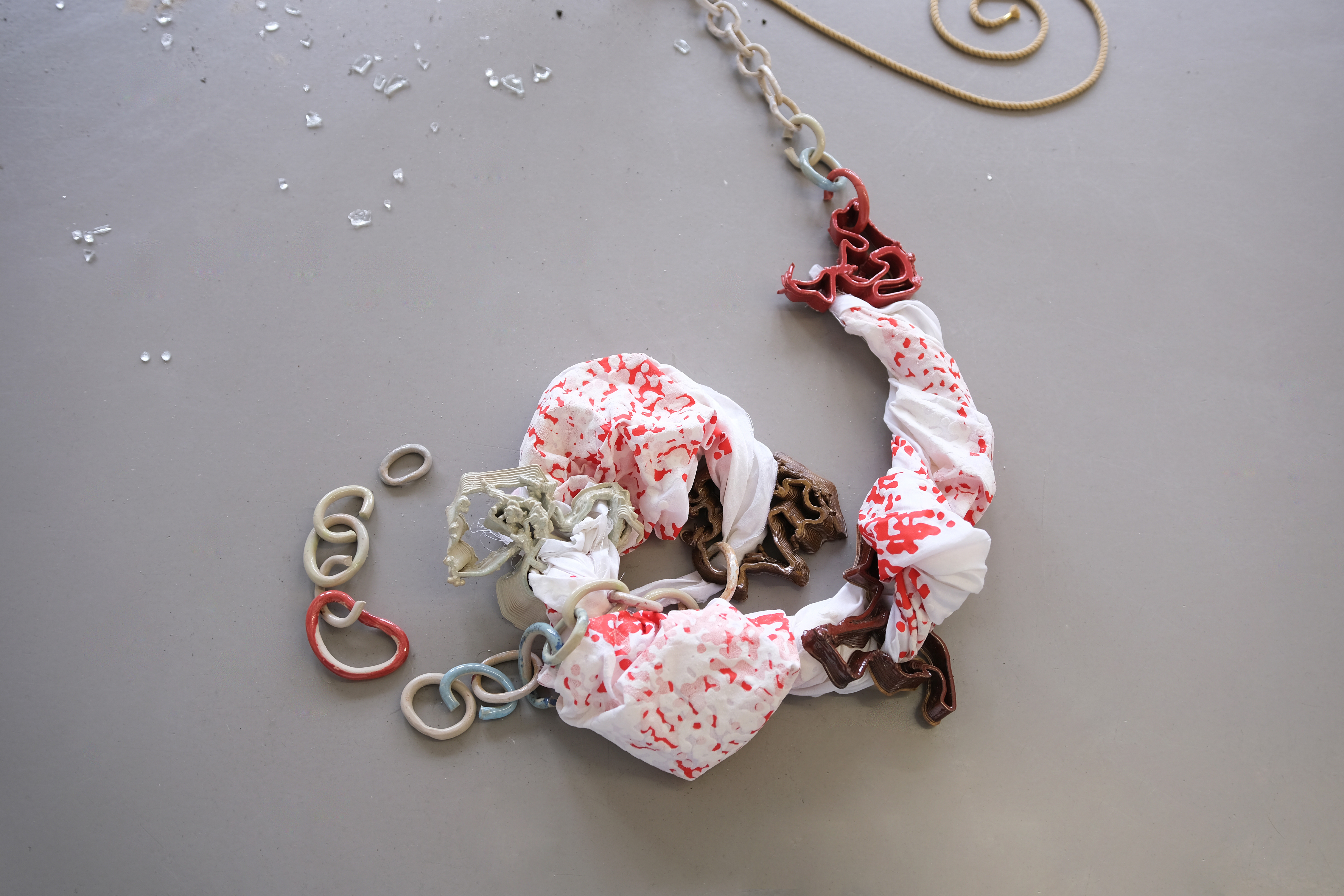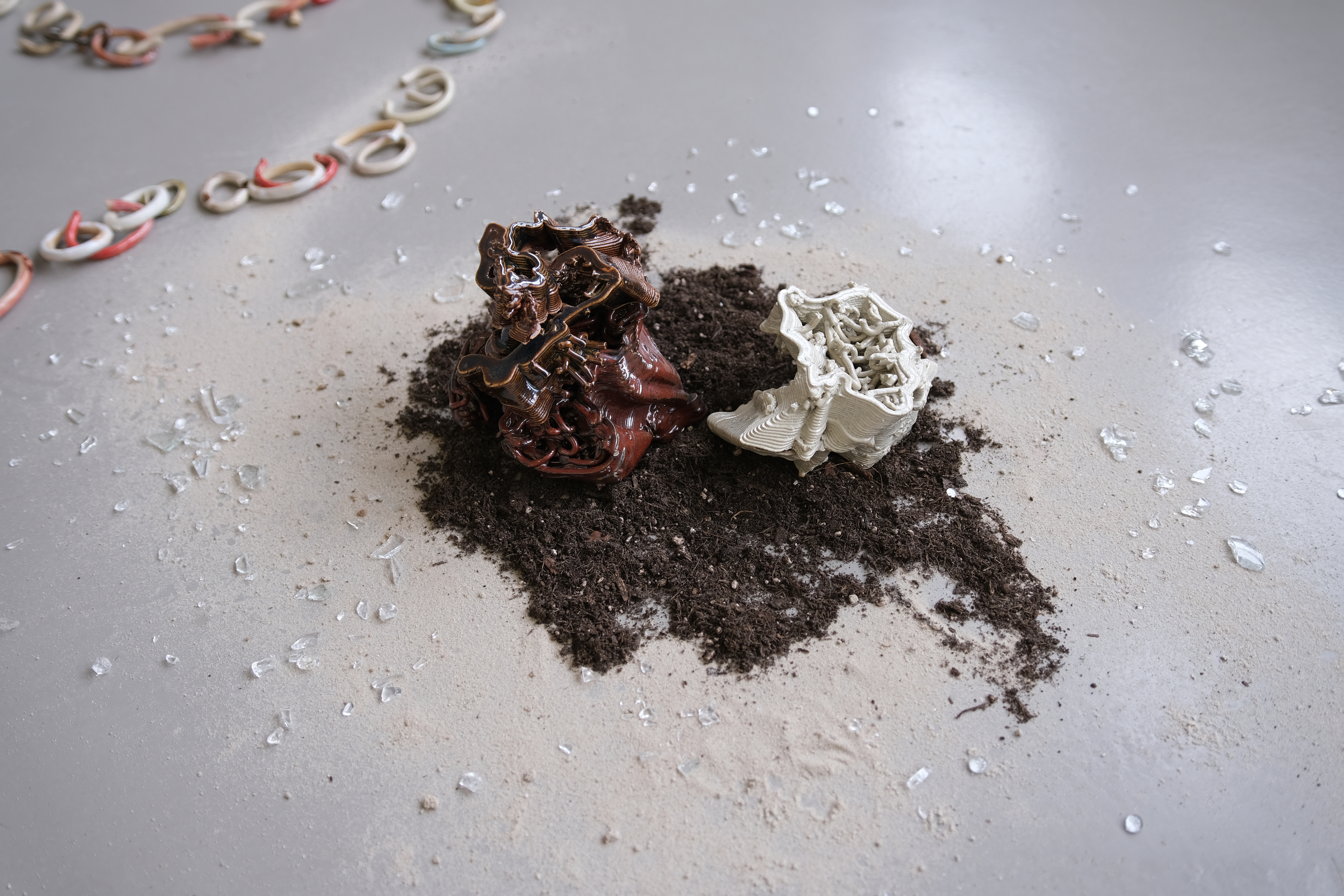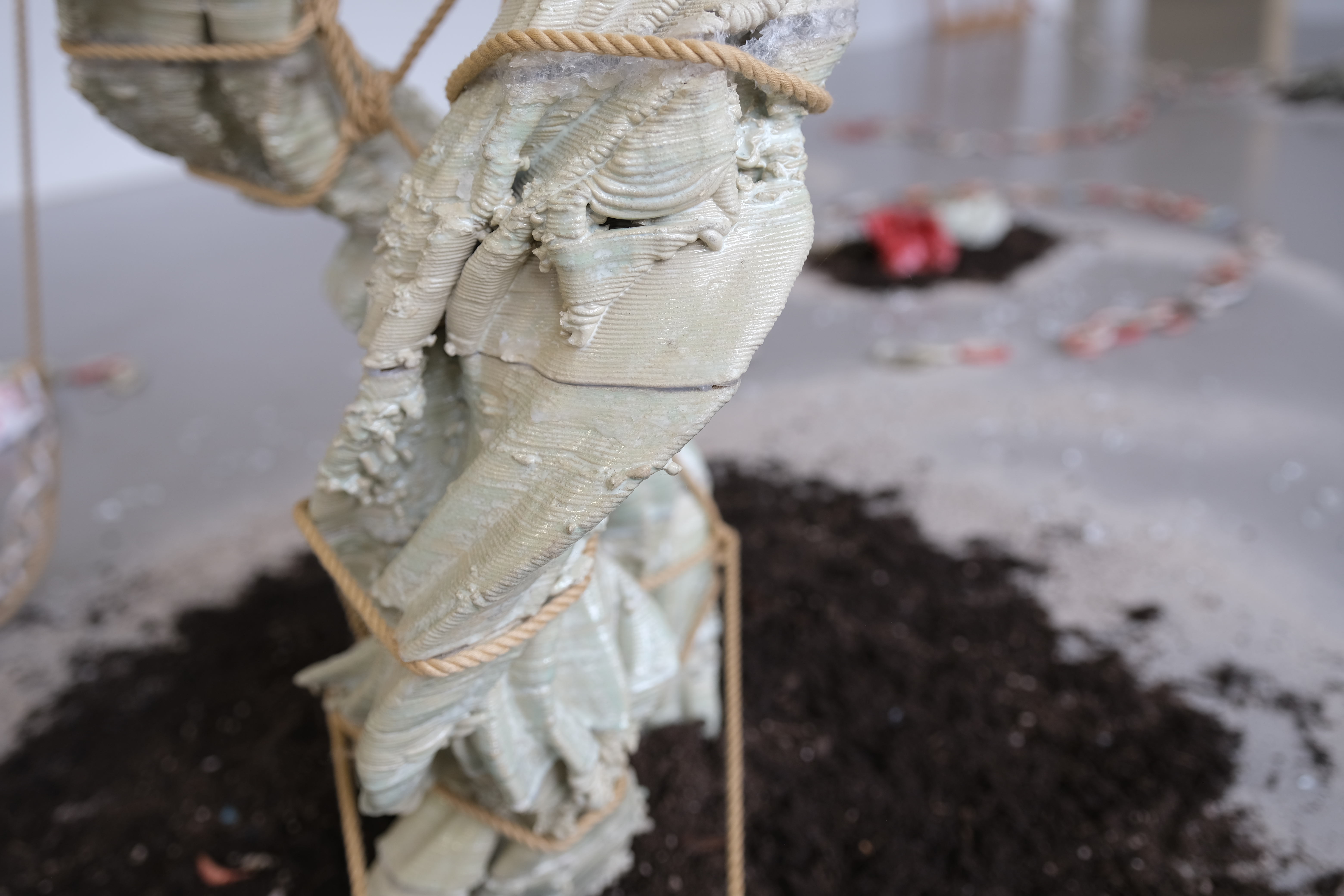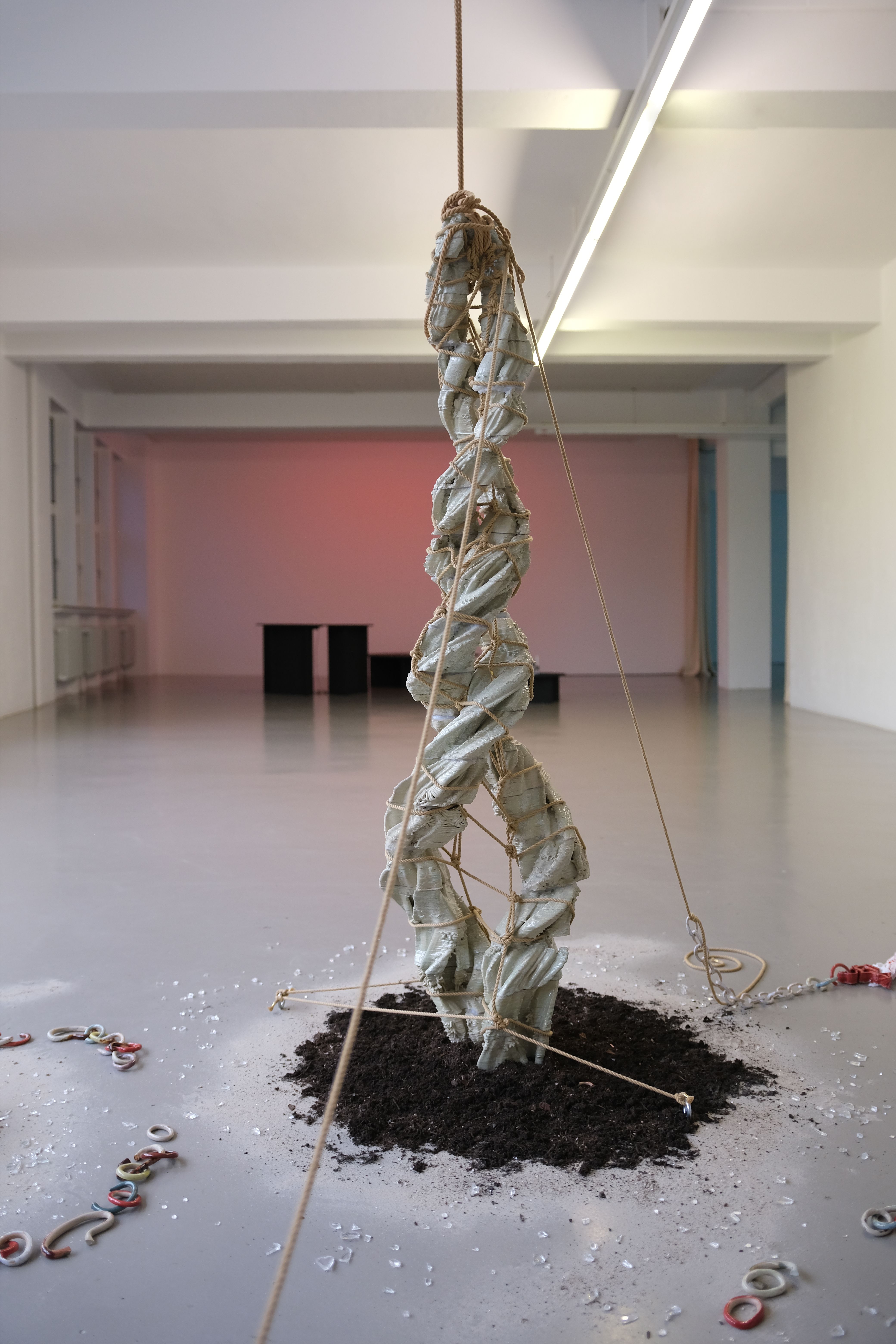The Sum and the Parts
Veranika Khatskevich observes—organic bodies, nature, and the human world: outlines of clouds, the surface of our skin, the texture of tree bark, and the structure of lichen. She extracts patterns from her observations, as well as recurring manifestations of nature; as a formalized means of expression, they allow her to interrogate the structures underpinning everything that exists.
What is nature, where does it begin, and how is it inscribed in the human world? Beginning with these questions, Khatskevich abstracts her observations into templates. This form of reduction is also found in research, where natural blueprints are used to serve technical purposes or commercial interests. The abstract and stylized copies in Khatskevich’s work, however, are always legible as imitations. They are collaged, superimposed, and merge together. The work thus becomes both a cipher and translation of the same thing—an image and a reproduction of nature in one.
In the installation The Coldest Sound, the viewer enters a place that draws on the structural principles of nature, embracing and continuing them. They encounter chains hanging from the ceiling and spread throughout the room. Fabrics printed with patterns sprawl out like bodies. Piles of earth settle on the floor like sediments, accumulating first into sand and then into glass. Rising in the midst of this landscape and growing out of the same earth is a ceramic structure. Using a machine printing process, Khatskevich shapes clay—an ancient and natural raw material—into an artificial reproduction of one of the most fundamental biological forms: the double helix. The surface of the sculpture becomes a technical facade, reflecting the human appropriation of nature. While the free-standing spiral is trussed and held by ropes, smaller, individual pieces can be found around it like building blocks.
